While many state names derive from English or Native American roots, Louisiana’s name comes from a European country. In fact, many of Louisiana’s most-populated cities have names that derive from the same location. This country’s influence on the state has made Louisiana unique in its culture, arts, and celebrations. Discover the country and people that inspired Louisiana’s name and find out which cities in the state share similar roots.
Overview of Louisiana
Louisiana was admitted into the Union on April 30, 1812, as the 18th state. Some states that border Louisiana include Texas, Mississippi, and Arkansas. In addition, the Gulf of Mexico sits along Louisiana’s southern border, allowing residents a gateway to the ocean. The capital of the state is Baton Rouge, and the largest city in the state is New Orleans, which has a population of around 376,971 residents.
Louisiana covers a total area of 52,378 square miles, and the state has a GDP of 281.429 billion U.S. dollars, as of March of 2023. The state’s economy once relied heavily on agriculture, including the production of cotton and sugarcane. After World War II, Louisiana shifted toward manufacturing, chemical production, and the oil and natural gas industry. Now, tourism, government services, and retail opportunities support Louisiana’s economy and remain the top employers in the state.
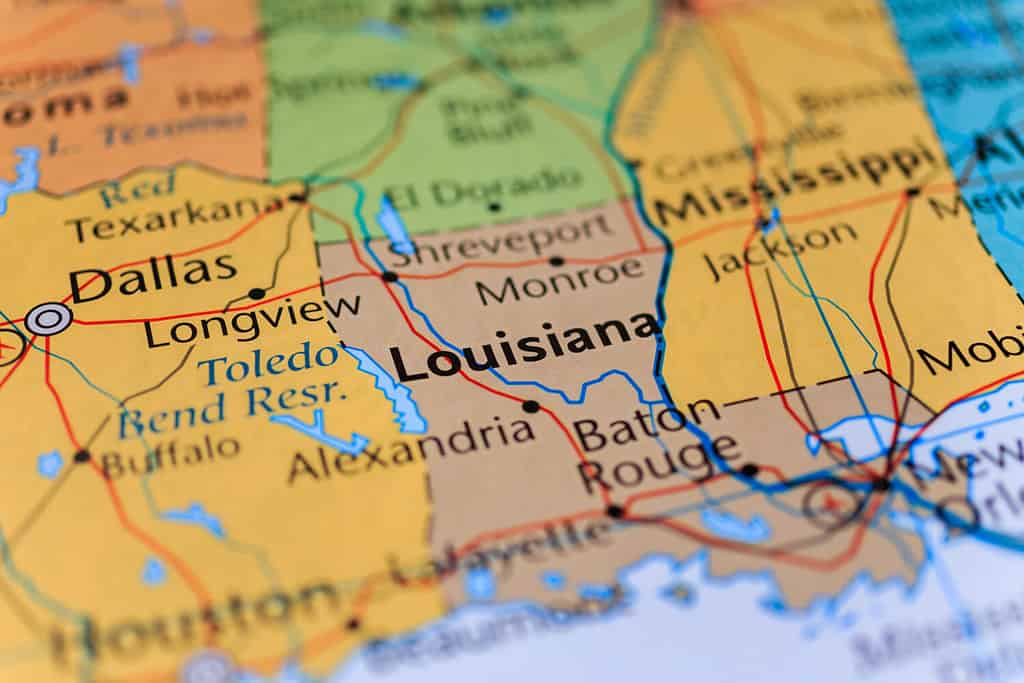
Louisiana became America’s 18th state in 1812.
©Alexander Lukatskiy/Shutterstock.com
How Did Louisiana Receive its Name?
Louisiana was named after Louis XIV of France, who ruled the European country from 1642 to 1715. The first person to use the term “Louisiana” was French explorer Rene Robert Cavelier de La Salle. However, Louisiana was not an official state–nor was the United States an independent country–at the time its land was discovered around 1683. The name described the territory of present-day Louisiana as well as portions of the Mississippi River drainage basin.
Who was Louis XIV?
Louis XIV was born September 5, 1638, and died in 1715 at the age of 76. As the king of France, Louis XIV ruled from the beautiful Palace of Versailles. He also held a strong belief in divine right, meaning he believed his power and authority over France derived directly from God. Louis XIV was also called the Sun King. The sun represented the Greek god Apollo, who oversaw peace and the arts. The sun also symbolized life, consistency, and control; Louis XIV believed he had the power to give life and control his subjects.

Louis XIV called himself the Sun King because he displayed sun-like traits during his reign of absolutism.
©Prachaya Roekdeethaweesab/Shutterstock.com
Climate in Louisiana
Louisiana has a subtropical climate, as it lies on the Gulf of Mexico. Summers in this state are humid and hot, and residents often see summer thunderstorms in the afternoons. In addition, winters in this state are mild and rarely cold. During July, Louisiana sees average temperature highs around 82ºF. On the other hand, January experiences average temperature lows of 50ºF.
The state experiences between 45 and 56 inches of annual rainfall, depending on the location. The period between June and November often sees increased tropical storm activity, including natural disasters like hurricanes.

Tropical storms, such as Hurricane Katrina, have devastated Louisiana’s land and population.
©lavizzara/Shutterstock.com
Wildlife in Louisiana
Wildlife in Louisiana is extremely diverse and unique to the state. Mammals include the Louisiana black bear, big brown bat, and long-tailed weasel. One marine mammal found in the state is the West Indian manatee. Amphibians include the common American bullfrog, eastern tiger salamander, and southern cricket frog. The American alligator is also common to the state, as well as various snake species like the eastern copperhead and eastern diamondback rattlesnake.
Some bird species found in Louisiana include the osprey, eastern wild turkey, and whopping crane. Louisiana has at least 224 distinct fish species. Some of these fish include spotted seatrout, bigmouth buffalo, and alligator gar. Additionally, insects and arachnids include the monarch butterfly, Texas brown tarantula, and Louisiana eyed silkmoth.

The eastern diamondback rattlesnake is one of the most venomous snakes found in Louisiana.
©Kristian Bell/Shutterstock.com
Prominent Cities in Louisiana and Origins of Their Names
In addition to the state’s name, several Louisiana cities have unique names with fascinating roots. Below, we describe some of Louisiana’s most well-known cities and the origins of their names.
New Orleans
New Orleans was established 17 years after France claimed Louisiana. The city was originally called “La Nouvelle Orléans,” and the name derived from the Duke of Orleans. The Duke of Orleans acted as the ruling regent of France before Louis XV took the crown. The French left an incredible influence on New Orleans’s food, culture, and celebrations. In fact, the impact of French culture on the city is still visible today, mainly through its architecture and Cajun French population. The city’s famous Mardi Gras celebration also has French roots.
New Orleans is an incredible city, marked by various unique cultures from around the world. Its African American influence led to the birth of jazz and well-known Creole cuisine. French architecture graces the famous Quarter, while Mardi Gras parades showcase costumes inspired by Native American heritage. Overall, the Crescent City is a melting pot of cultures.
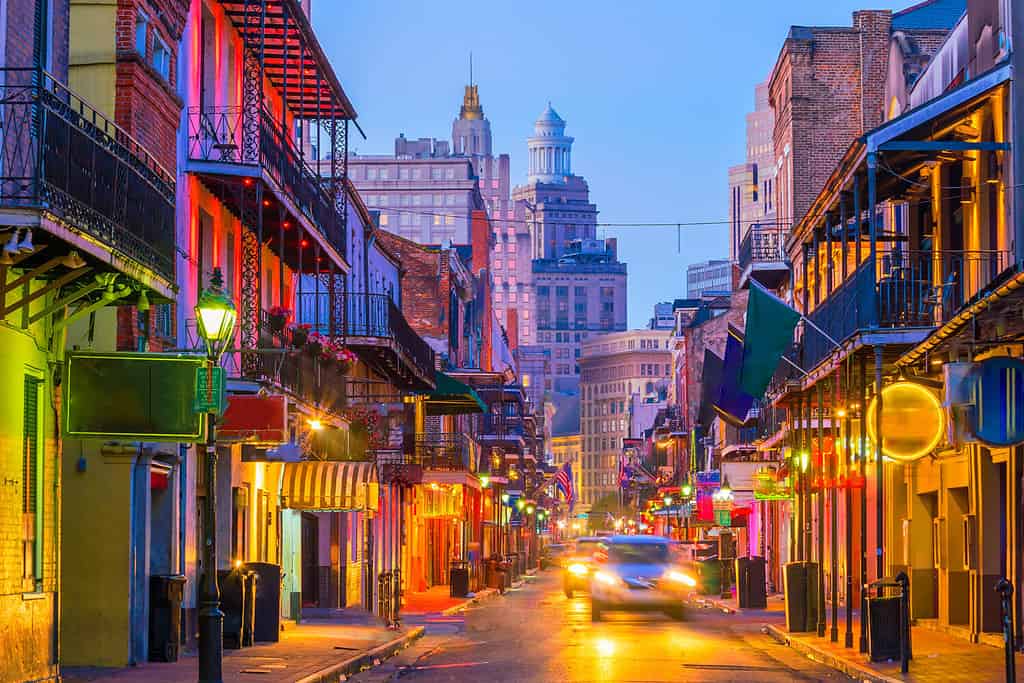
The city of New Orleans was named after the Duke of Orleans.
©f11photo/Shutterstock.com
Baton Rouge
Did you know that “Baton Rouge” means “red stick” in French? According to legend, two Native American tribes placed a cypress pole between their communities as a border marker. When a group of explorers came across the cypress pole, they found blood on it. Thus, they called the cypress pole “le bâton rouge” or “the red stick.”
Baton Rouge became an official town in 1817. After the Civil War and Reconstruction, the city grew steadily. Oil and natural gas production became a primary industry in Baton Rouge. After World War II, the city grew significantly as a distribution center. In addition, several industries and government services drew in more residents. Finally, Baton Rouge acts as Louisiana’s state capital with a population of around 222,000 residents.
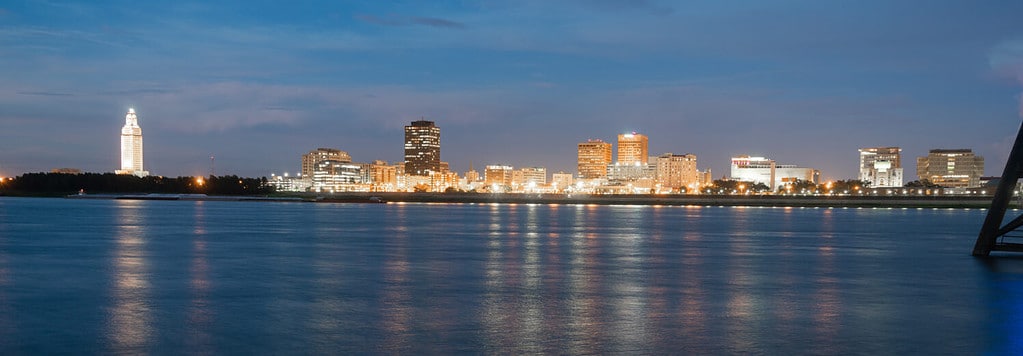
Baton Rouge is the capital of Louisiana, and the city’s name means “red stick.”
©Real Window Creative/Shutterstock.com
Lafayette
Lafayette was originally part of St. Martin Parish until 1823. After it split from its previous parish, it needed a new name. Officials chose “Lafayette” after Marquis de Lafayette, a French noble born in the mid-1700s. Marquis de Lafayette left an incredible impact on both the United States and France. He fought in the American Revolution and is considered a main figure and hero of the French Revolution.
Before World War II, agriculture, including the production of corn, cotton, and sugarcane, largely supported Lafayette’s economy. After the war, Lafayette, much like other cities in Louisiana, saw promise and prosperity in the oil and gas industry. The city acted as a supply center for the industry. It continues to remain an important distribution center for crops and goods.
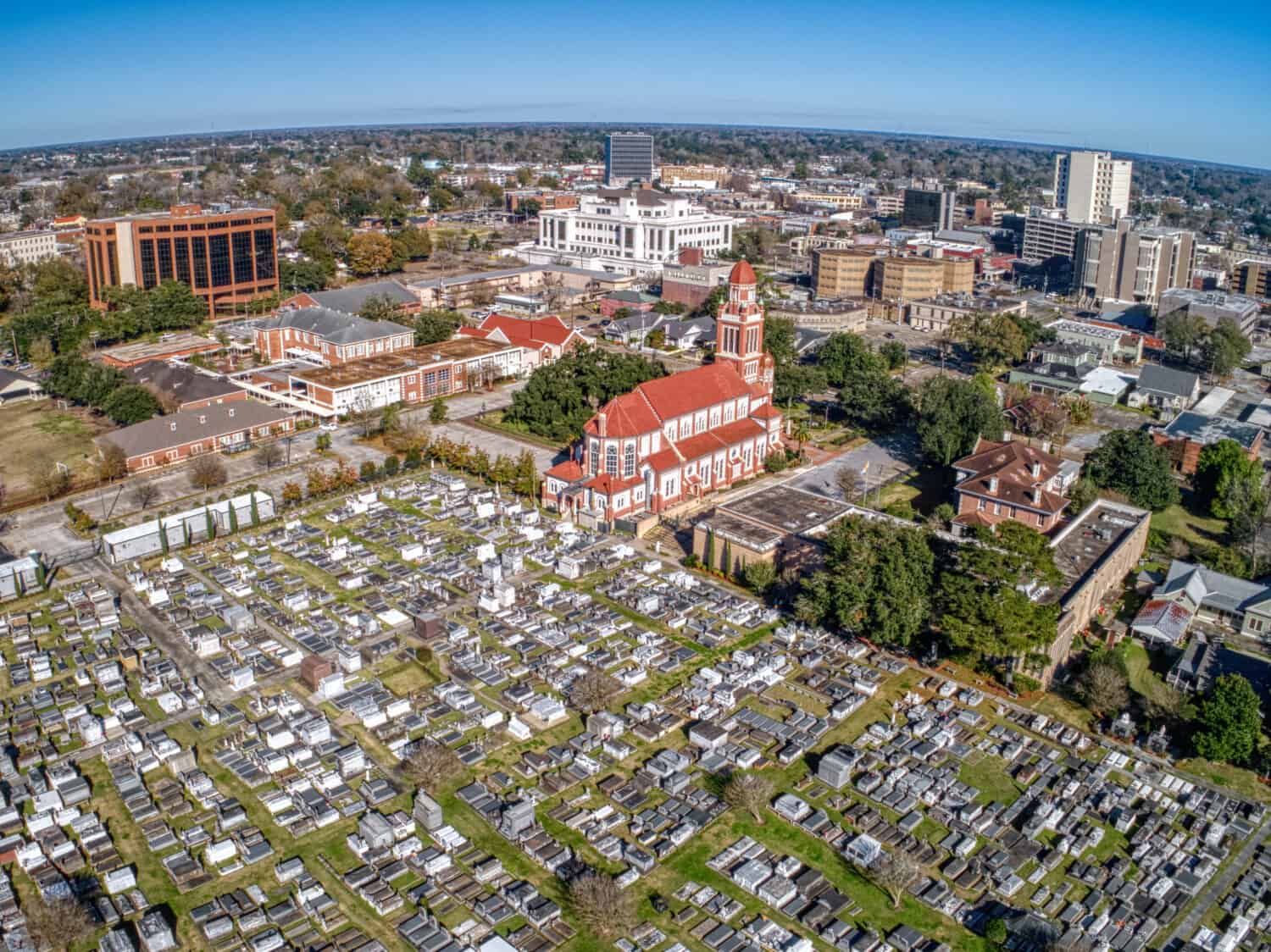
Lafayette, LA was named after revolutionary hero Marquis de Lafayette.
©Jacob Boomsma/Shutterstock.com
Shreveport
Shreveport’s name derives from Captain Henry Miller Shreve, a river captain and engineer who helped establish Shreveport. Captain Shreve’s impressive engineering work landed him an incredible position. Shreve oversaw all western river improvements and used his inventions to help communities expand westward. When Captain Shreve began to clear a river obstruction in Louisiana, he set up a camp, which eventually became the city of Shreveport.
While Shreveport was established in 1837, the city didn’t grow substantially until after the Civil War. The year 1906 brought an incredible economic boom, as oil had just been discovered. Now, the population of Shreveport stands at 184,021 residents. The city acts as an industrial and commercial center for several states, including Texas and Arkansas.
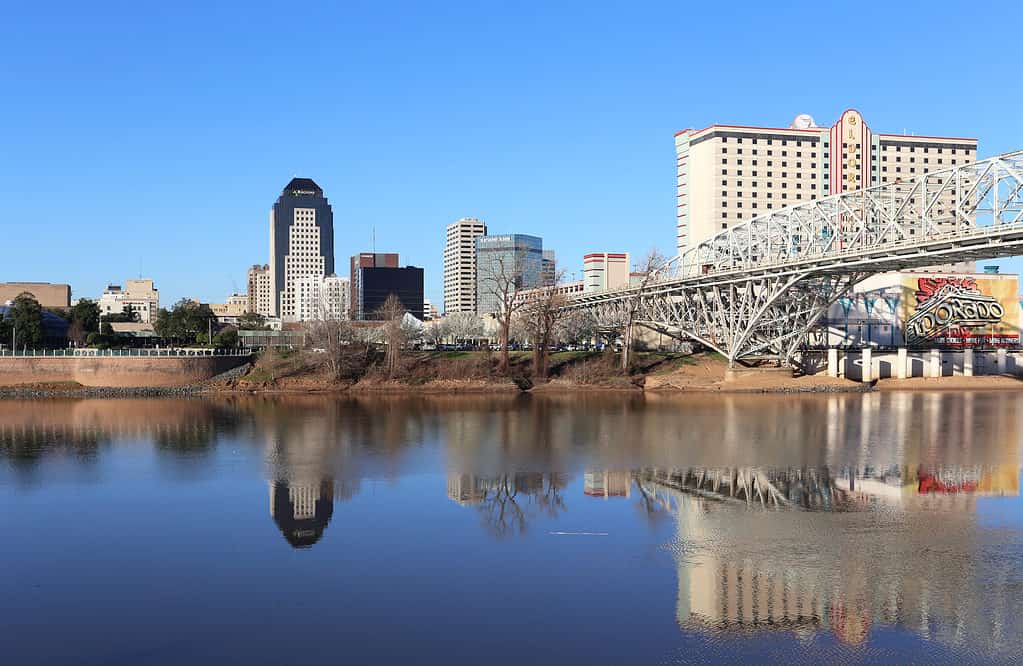
Captain Henry Miller Shreve was an engineer and river captain that founded Shreveport, LA.
©Katherine Welles/Shutterstock.com
Origins of Names in Louisiana: A Summary
| Name | Origin/Meaning |
|---|---|
| Louisiana | Louis XIV of France |
| New Orleans | Duke of Orleans, ruling regent of France |
| Baton Rouge | “Red stick”, named for the red stick dividing two Native American communities |
| Lafayette | Marquis de Lafayette, considered a hero in the American and French Revolutions |
| Shreveport | Captain Henry Miller Shreve, who founded a camp while clearing a river obstruction in Louisiana |
The photo featured at the top of this post is © Katherine Welles/Shutterstock.com
Thank you for reading! Have some feedback for us? Contact the AZ Animals editorial team.






